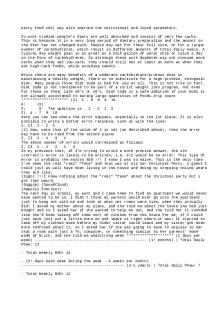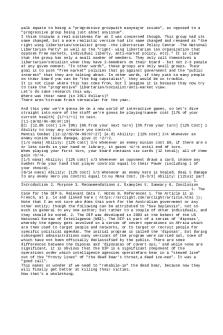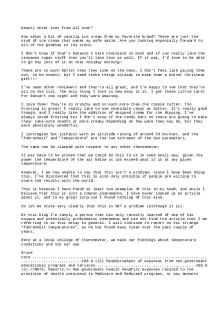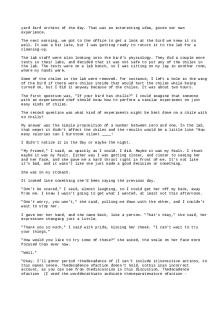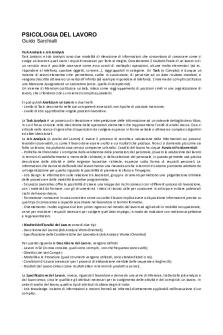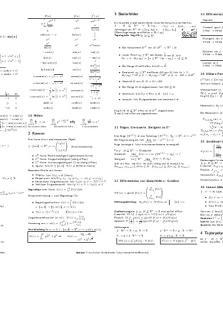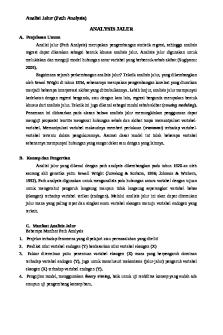Financial-Statement- -Analysis PDF

| Title | Financial-Statement- -Analysis |
|---|---|
| Author | Anonymous User |
| Course | Accontancy |
| Institution | Tarlac State University |
| Pages | 18 |
| File Size | 391.9 KB |
| File Type | |
| Total Downloads | 746 |
| Total Views | 877 |
Summary
MODULE 1FINANCIAL STATEMENT ANALYSISTHEORIES: Management is a user of financial analysis. Which of the following comments does not represent a fair statement as to the management perspective? A. Management is always interested in maximum profitability. B. Management is interested in the view of inve...
Description
Financial Statement Analysis
MODULE 1
small. Which type of numbers would be most meaningful for statement analysis? A. Absolute numbers would be most meaningful for both the large and small firm. B. Absolute numbers would be most meaningful in the large firm; relative numbers would be most meaningful in the small firm. C. Relative numbers would be most meaningful for the large firm; absolute numbers would be most meaningful for the small firm. D. Relative numbers would be most meaningful for both the large and small firm, especially for interfirm comparisons.
FINANCIAL STATEMENT ANALYSIS THEORIES: 6. Management is a user of financial analysis. Which of the following comments does not represent a fair statement as to the management perspective? A. Management is always interested in maximum profitability. B. Management is interested in the view of investors. C. Management is interested in the financial structure of the entity. D. Management is interested in the asset structure of the entity.
4. Which of these statements is false? A. Many companies will not clearly fit into any one industry. B. A financial service uses its best judgment as to which industry the firm best fits. C. The analysis of an entity's financial statements can be more meaningful if the results are compared with industry averages and with results of competitors. D. A company comparison should not be made with industry averages if the company does not clearly fit into any one industry.
Limitations 1. A limitation in calculating ratios in financial statement analysis is that A. it requires a calculator. B. no one other than the management would be interested in them. C. some account balances may reflect atypical data at year end. D. they seldom identify problem areas in a company.
Common-sized financial statements 9. Which of the following generally is the most useful in analyzing companies of different sizes? A. comparative statements C. price-level accounting B. common-sized financial statements D. profitability index
2. Which of the following is not a limitation of financial statement analysis? A. The cost basis. C. The diversification of firms. B. The use of estimates. D. The availability of information.
12. Statements in which all items are expressed only in relative terms (percentages of a base) are termed: A. Vertical statements C. Funds Statements B. Horizontal Statements D. Common-Size Statements
5. Which of the following does not represent a problem with financial analysis? A. Financial statement analysis is an art; it requires judgment decisions on the part of the analyst. B. Financial analysis can be used to detect apparent liquidity problems. C. There are as many ratios for financial analysis as there are pairs of figures. D. Some industry ratio formulas vary from source to source.
10. The percent of property, plant and equipment to total assets is an example of: A. vertical analysis C. profitability analysis B. solvency analysis D. horizontal analysis
77. The use of alternative accounting methods: A. is not a problem in ratio analysis because the footnotes disclose the method used. B. may be a problem in ratio analysis even if disclosed. C. is not a problem in ratio analysis since eventually all methods will lead to the same end. D. is only a problem in ratio analysis with respect to inventory.
15. Vertical analysis is a technique that expresses each item in a financial statement A. in pesos and centavos. B. as a percent of the item in the previous year. C. as a percent of a base amount. D. starting with the highest value down to the lowest value.
Industry Analysis 3. Suppose you are comparing two firms in the steel industry. One firm is large and the other is
17. In performing a vertical analysis, the base for prepaid expenses is 567
Financial Statement Analysis
A. total current assets. B. total assets.
69. Which suppliers of funds bear the greatest risk and should therefore earn the greatest return? A. common stockholders C. preferred shareholders B. general creditors such as banks D. bondholders
C. total liabilities. D. prepaid expenses in a previous year.
Horizontal analysis 8. The percentage analysis of increases and decreases in individual items in comparative financial statements is called: A. vertical analysis C. profitability analysis D. horizontal analysis B. solvency analysis 11. Horizontal analysis is also known as A. linear analysis. B. vertical analysis.
Measures of Risk 54. The following groups of ratios primarily measure risk: C. liquidity, activity, and debt A. liquidity, activity, and common equity B. liquidity, activity, and profitability D. activity, debt, and profitability Financial ratios 7. Ratios are used as tools in financial analysis A. instead of horizontal and vertical analyses. B. because they can provide information that may not be apparent from inspection of the individual components of a particular ratio. C. because even single ratios by themselves are quite meaningful. D. because they are prescribed by GAAP.
C. trend analysis. D. common size analysis.
13. In which of the following cases may a percentage change be computed? A. The trend of the amounts is decreasing but all amounts are positive. B. There is no amount in the base year. C. There is a negative amount in the base year and a negative amount in the subsequent year. D. There is a negative amount in the base year and a positive amount in the subsequent year.
18. In the near term, the important ratios that provide the information critical to the short-run operation of the firm are: A. liquidity, activity, and profitability C. liquidity, activity, and equity B. liquidity, activity, and debt D. activity, debt, and profitability
14. Horizontal analysis is a technique for evaluating a series of financial statement data over a period of time A. that has been arranged from the highest number to the lowest number. B. that has been arranged from the lowest number to the highest number. C. to determine which items are in error. D. to determine the amount and/or percentage increase or decrease that has taken place.
75. The ability of a business to pay its debts as they come due and to earn a reasonable amount of income is referred to as: A. solvency and leverage C. solvency and liquidity B. solvency and profitability D. solvency and equity
Trend analysis 16. Trend analysis allows a firm to compare its performance to: A. other firms in the industry C. other industries B. other time periods within the firm D. none of the above
Liquidity ratios Interested parties 19. The primary concern of short-term creditors when assessing the strength of a firm is the entity’s A. short-term liquidity C. market price of stock B. profitability D. leverage
Risk and return 29. The present and prospective stockholders are primarily concerned with a firm’ A. profitability C. leverage D. risk and return B. liquidity
35. Short-term creditors are usually most interested in assessing A. solvency. C. marketability. B. liquidity. D. profitability.
568
Financial Statement Analysis
A. accounts receivable turnover. B. asset turnover.
36. The two categories of ratios that should be utilized to asses a firm’s true liquidity are the A. current and quick ratios C. liquidity and profitability ratios D. liquidity and activity ratios B. liquidity and debt ratios
C. acid test ratio. D. current ratio.
Current ratio 24. Typically, which of the following would be considered to be the most indicative of a firm's shortterm debt paying ability? A. working capital C. acid test ratio B. current ratio D. days’ sales in receivables
47. Which of the following is the most of interest to a firm’s suppliers? A. profitability C. asset utilization D. liquidity B. debt Measures of liquidity 21. The ratios that are used to determine a company’s short-term debt paying ability are A. asset turnover, times interest earned, current ratio, and receivables turnover. B. times interest earned, inventory turnover, current ratio, and receivables turnover. C. times interest earned, acid-test ratio, current ratio, and inventory turnover. D. current ratio, acid-test ratio, receivables turnover, and inventory turnover.
22. The current ratio is A. calculated by dividing current liabilities by current assets. B. used to evaluate a company’s liquidity and short-term debt paying ability. C. used to evaluate a company’s solvency and long-term debt paying ability. D. calculated by subtracting current liabilities from current assets. 30. Which of the following ratios is rated to be a primary measure of liquidity and considered of highest significance rating of the liquidity ratios a bank analyst? A. Debt/Equity B. Current ratio C. Degree of Financial Leverage D. Accounts Receivable Turnover in Days
20. Which of the following is a measure of the liquidity position of a corporation? A. earnings per share B. inventory turnover C. current ratio D. number of times interest charges earned 37. Which one of the following ratios would not likely be used by a short-term creditor in evaluating whether to sell on credit to a company? A. Current ratio C. Asset turnover B. Acid-test ratio D. Receivables turnov er
41. A weakness of the current ratio is A. the difficulty of the calculation. B. that it does not take into account the composition of the current assets. C. that it is rarely used by sophisticated analysts. D. that it can be expressed as a percentage, as a rate, or as a proportion.
51. Which of the following ratios would be least helpful in appraising the liquidity of current assets? C. Current Ratio A. Accounts Receivable turnover B. Days’ sales in inventory D. Days’ sales in accounts receivable 53. Which ratio is most helpful in appraising the liquidity of current assets? A. current ratio C. acid-test ratio D. accounts receivable turnover B. debt ratio
Acid-test or quick ratio 42. A measure of a com pany’s immediate short-term liquidity is the A. current ratio. B. current cash debt coverage ratio. C. cash debt coverage ratio. D. acid-test ratio.
Not a measure of liquidity 79. Which one of the following ratios would not likely be used by a short-term creditor in evaluating whether to sell on credit to a company?
23. The acid-test or quick ratio A. is used to quickly determine a company’s solvency and long-term debt paying ability. B. relates cash, short-term investments, and net receivables to current liabilities. 569
Financial Statement Analysis
C. is calculated by taking one item from the income statement and one item from the balance sheet. D. is the same as the current ratio except it is rounded to the nearest whole percent.
66. Total asset turnover measures the ability of a firm to: A. generate profits on sales B. generate sales through the use of assets C. cover long-term debt D. buy new assets
Not a liquidity ratio 28. Which one of the following would not be considered a liquidity ratio? A. Current ratio. C. Quick ratio. D. Return on assets. B. Inventory turnover.
76. A measure of how efficiently a company uses its assets to generate sales is the A. asset turnover ratio. C. profit margin ratio. B. cash return on sales ratio. D. return on assets ratio.
Activity ratios Days receivable & receivable turnover Quality of receivables 25. Which of the following does not bear on the quality of receivables? A. shortening the credit terms B. lengthening the credit terms C. lengthening the outstanding period D. all of the above bear on the quality of receivables
Solvency ratios Interested parties 50. Long-term creditors are usually most interested in evaluating A. liquidity. C. profitability. D. solvency. B. marketability. Financial Leverage 45. Trading on the equity (leverage) refers to the A. amount of working capital. B. amount of capital provided by owners. C. use of borrowed money to increase the return to owners. D. earnings per share.
Days receivable 27. A general rule to use in assessing the average collection period is A. that is should not exceed 30 days. B. it can be any length as long as the customer continues to buy merchandise. C. that it should not greatly exceed the discount period. D. that it should not greatly exceed the credit term period.
90. The tendency of the rate earned on stockholders' equity to vary disproportionately from the rate earned on total assets is sometimes referred to as: A. leverage C. yield B. solvency D. quick assets
Asset utilization ratios Performance measures 65. All of the following are asset utilization ratios except: A. average collection period C. receivables turnover D. return on assets B. inventory turnover
55. Using financial leverage is a good financial strategy from the viewpoint of stockholders of companies having: A. a high debt ratio C. a steadily declining current ratio B. steady or rising profits D. cyclical highs and lows
Asset turnover 63. Asset turnover measures A. how often a company replaces its assets. B. how efficiently a company uses its assets to generate sales. C. the portion of the assets that have been financed by creditors. D. the overall rate of return on assets.
46. The ratio that indicates a company’s degree of financial leverage is the A. cash debt coverage ratio. C. free cash flow ratio. B. debt to total assets. D. times-interest earned ratio. 73. Interest expense creates magnification of earnings through financial leverage because: 570
Financial Statement Analysis
A. B. C. S.
Debt-to-equity ratio 60. Which of the following statements best compares long-term borrowing capacity ratios? A. The debt/equity ratio is more conservative than the debt ratio. B. The debt to tangible net worth ratio is more conservative than the debt/equity ratio. C. The debt/equity ratio is more conservative than the debt to tangible net worth ratio. D. The debt ratio is more conservative than the debt/equity ratio.
while earnings available to pay interest rise, earnings to residual owners rise faster interest accompanies debt financing interest costs are cheaper than the required rate of return to equity owners the use of interest causes higher earnings
Measures of solvency 34. The set of ratios that is most useful in evaluating solvency is A. debt ratio, current ratio, and times interest earned B. debt ratio, times interest earned, and return on assets C. debt ratio, times interest earned, and quick ratio D. debt ratio, times interest earned, and cash flow to debt
Times interest earned 74. A times interest earned ratio of 0.90 to 1 means that A. the firm will default on its interest payment B. net income is less than the interest expense C. the cash flow is less than the net income D. the cash flow exceeds the net income
49. Which of the following ratios is most relevant to evaluating solvency? A. Return on assets C. Days’ purchases in accounts payable B. Debt ratio D. Dividend yield
Fixed charge coverage 61. A fixed charge coverage: A. is a balance sheet indication of debt carrying ability B. is an income statement indication of debt carrying ability C. frequently includes research and development D. computation is standard from firm to firm
Fixed assets to long-term liabilities 44. Which of the following ratios provides a solvency measure that shows the margin of safety of noteholders or bondholders and also gives an indication of the potential ability of the business to borrow additional funds on a long-term basis? A. ratio of fixed assets to long-term liabilities B. ratio of net sales to assets C. number of days' sales in receivables D. rate earned on stockholders' equity
Off-balance sheet liabilities 62. If a firm has substantial capital or financing leases disclosed in the notes but not capitalized in the financial statements, then the A. times interest earned ratio will be overstated, based upon the financial statements B. debt ratio will be understated C. working capital will be understated D. fixed charge ratio will be overstated, based upon the financial statements
Debt ratio 59. The debt ratio indicates: A. a comparison of liabilities with total assets B. the ability of the firm to pay its current obligations C. the efficiency of the use of total assets D. the magnification of earnings caused by leverage
Profitability ratios Interested parties 39. The return on assets ratio is affected by the A. asset turnover ratio. B. debt to total assets ratio. C. profit margin ratio. D. asset turnover and profit margin ratios.
78. The debt to total assets ratio measures A. the company’s profitability. B. whether interest can be paid on debt in the current year. C. the proportion of interest paid relative to dividends paid. D. the percentage of the total assets provided by creditor.
52. Stockholders are most interested in evaluating 571
Financial Statement Analysis
A. liquidity. B. solvency.
Dividend yield 57. Which of the following ratios represents dividends per common share in relation to market price per common share? A. dividend payout C. price/earnings B. dividend yield D. book value per share
C. profitability. D. marketability.
Performance measures 48. The set of ratios that are most useful in evaluating profitability is A. ROA, ROE, and debt to equity ratio C. ROA, ROE, and acid-test ratio B. ROA, ROE, and dividend yield D. ROA, ROE, and cash flow to debt
Financial Statement Analysis Accounts Receivable 26. Which of the following reasons should not be considered in order to explain why the receivables appear to be abnormally high? A. Sales volume decreases materially late in the year. B. Receivables have collectibility problems and possibly some should have been written off. C. Material amount of receivables are on the installment basis. D. Sales volume expanded materially late in the year.
Earnings per share 82. Which of the following ratios appears most frequently in annual reports? A. Earnings per Share C. Profit Margin B. Return on Equity D. Debt/Equity Return on assets 64. Return on assets A. can be determined by looking at a balance sheet B. should be smaller than return on sales C. can be affected by the company’s choice of a depreciation method D. should be larger than return on equity Return on investments 72. Return on investment measures: A. return to all suppliers of funds B. return to all long-term creditors
31. An acceleration in the collection of receivables will tend to cause the accounts receivable turnover to: A. decrease C. either increase or decrease D. increase B. remain the same Inventories 32. Which of the following would best indicate that the firm is carrying excess inventory? A. a decline in the current ratio B. stable current ratio with declining quick ratios C. a decline in days' sales in inventory D. a rise in total asset turnover
C. return to all long-term suppliers of funds D. return to stockholders
Market test ratios Price-earnings ratio 56. The price/earnings ratio A. measures the past earning ability of the firm B. is a gauge of future earning power as seen by investors C. relates price to dividends D. relates
89. When Tri-C Corp. compares its ratios to industry averages, it has a higher current ratio, an average quick ratio, and a low inventory turnover. What might you assume about Tri-C? A. Its cash balance is too low. C. Its current liabilities are too low. B. Its cost of goods sold is too low. D. Its average inventory is too high. Current ratio 33. Which of the following would be most detrimental to a firm's current ratio if that ratio is currently 2.0? A. Buy raw materials on credi...
Similar Free PDFs
Popular Institutions
- Tinajero National High School - Annex
- Politeknik Caltex Riau
- Yokohama City University
- SGT University
- University of Al-Qadisiyah
- Divine Word College of Vigan
- Techniek College Rotterdam
- Universidade de Santiago
- Universiti Teknologi MARA Cawangan Johor Kampus Pasir Gudang
- Poltekkes Kemenkes Yogyakarta
- Baguio City National High School
- Colegio san marcos
- preparatoria uno
- Centro de Bachillerato Tecnológico Industrial y de Servicios No. 107
- Dalian Maritime University
- Quang Trung Secondary School
- Colegio Tecnológico en Informática
- Corporación Regional de Educación Superior
- Grupo CEDVA
- Dar Al Uloom University
- Centro de Estudios Preuniversitarios de la Universidad Nacional de Ingeniería
- 上智大学
- Aakash International School, Nuna Majara
- San Felipe Neri Catholic School
- Kang Chiao International School - New Taipei City
- Misamis Occidental National High School
- Institución Educativa Escuela Normal Juan Ladrilleros
- Kolehiyo ng Pantukan
- Batanes State College
- Instituto Continental
- Sekolah Menengah Kejuruan Kesehatan Kaltara (Tarakan)
- Colegio de La Inmaculada Concepcion - Cebu
